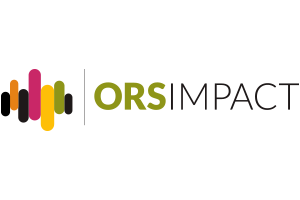Introduction
As of 2018, researchers have estimated that over 700,000 adolescent minors, or 1 in 30 of the population of 13- to 17-year-olds, have experienced homelessness. These numbers are even more alarming when looking at young adults ages 18-25, of whom approximately 3.5 million, or 1 in 10, have experienced homelessness. Furthermore, these rates are even higher for LGBTQIA+ and BIPOC youth, who have a 2.2X and 1.8X greater risk of experiencing homelessness compared to all other youth, respectively.
Since 2015, Community Solutions has supported organizations working in this space through its Built for Zero (BFZ) initiative, a movement of over 100 communities working to produce demonstrable evidence that population-level reductions in homelessness are possible. Through this model, Community Solutions not only provides foundational coaching and assistance to communities, but further supports the development of a national systems-change framework to sustainably ending homelessness for all populations across a diversity of complex ecosystems and geographies. When adopted at scale, the organization sees this approach as a primary way to create a “tipping point” in which the conditions are primed across communities to create an equitable and lasting end to homelessness.
To reach this “tipping point”, Community Solutions focuses their model on a number of key drivers that serve to catalyze the field in adopting this coordinated, systems-change approach to homelessness prevention and response. For instance, the BFZ model focuses on leveraging high-quality data, system improvement, and collaboration across systems to create the local conditions for any community to end homelessness. It also places a great deal of emphasis on transforming homeless and housing systems to be person-centered and equitable in process and outcomes, as well as on creating tools to improve housing systems and increase supply of quality, affordable housing. From an influence perspective, the BFZ model also entails efforts to create enabling conditions for solving homelessness at scale through strategic partnerships, network-building, resource mobilization, shifting narratives, policy change mechanisms, and mechanisms to hold leaders accountable for population-level reductions.
Altogether, these different aspects of the model serve to generate overwhelming proof that homelessness is solvable as demonstrated by a critical mass of diverse communities who have credibly and sustainably ended homelessness. Within this initiative, Community Solutions currently supports over 30 U.S. communities working on youth homelessness efforts in particular. Tangibly speaking, these communities receive supports such as targeted 1:1 coaching, data-related technical assistance, a variety of peer learning and connecting opportunities, and opportunities to secure additional catalytic or flexible funding among other supports and resources.
As a part of their ongoing support to these 30+ communities, Community Solutions seeks out opportunities to elevate effective practices and approaches across the field. Toward that end, they engaged ORS Impact, a strategy and evaluation consulting firm, to conduct a current state assessment of interventions, practices, and broader strategies to prevent, reduce, and end youth homelessness. The purpose of this project was to deepen our collective understanding of the effectiveness of different approaches for preventing and ending youth homelessness at scale, with the goal of sharing guidance with both Community Solutions and the broader homeless response sector. This document is the culmination of that effort. In the following pages, we share information about our approach to this project, select insights and recommendations from our assessment, and an appendix detailing our methodological approach to this work.
Our Approach to this Work
inquiry for our assessment activities. These focal questions (see below) would serve as the guiding parameters informing not only what information we look for, but also where we look and how we collect and analyze that information. In partnership with Community Solutions leaders, we landed on a set of guiding questions that were designed to equip us with a robust, well-rounded collection of learnings and insights that could be a useful and responsive resource made available to the field.
As described in greater detail on the following page, the six areas of inquiry we used in this project include: (1) definitions of youth homelessness, (2) evidence of effectiveness of youth homelessness interventions, (3) the role of adjacent system partners in youth homelessness strategies, (4) strategies for youth subpopulation, (5) implications for adult populations, and (6) broader implications for the youth homelessness field.
To address these areas of inquiry, ORS Impact outlined a 4-phase approach beginning in April 2023 and ending in early 2024, building from initial kick-off activities to a series of data collection, analysis, and sensemaking activities with Community Solutions leadership. At a high level, the activities across these four phases (described below) allowed us to engage in a robust assessment of the current state of youth homelessness interventions across the field.
Starting with Kick-Off and Shared Vision activities allowed us to collaboratively align around a consensus for how and why we’re conducting this work and how we could best share our learning and recommendations with the youth homelessness field. Subsequently, the Landscape Scan and Direct Data Collection activities equipped us with a diverse, rich body of information and data from which we could begin to develop a deeper understanding of what works for youth homelessness strategies and why.
Finally, the Collective Sensemaking activities with Community Solutions leaders helped us to refine our observations into the set of key learnings and recommendations we share here.

